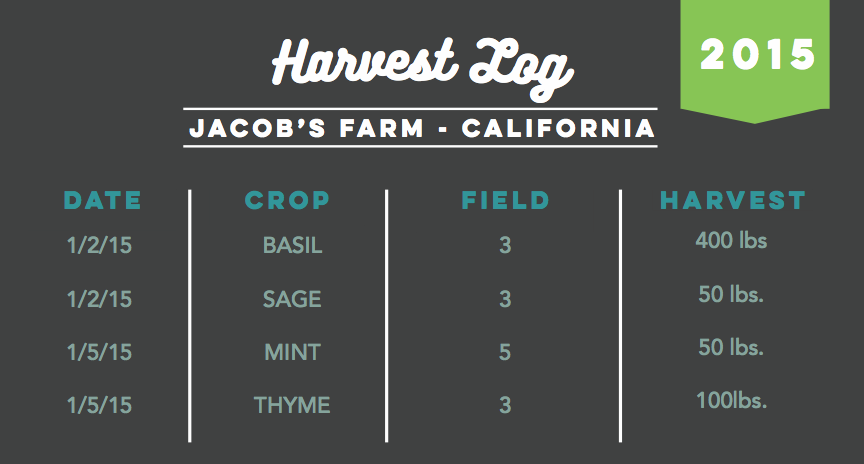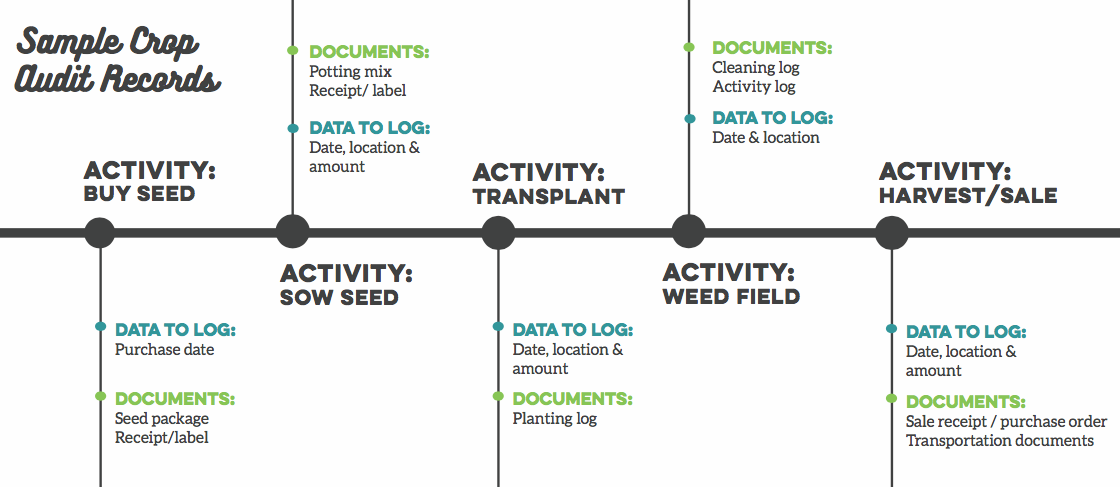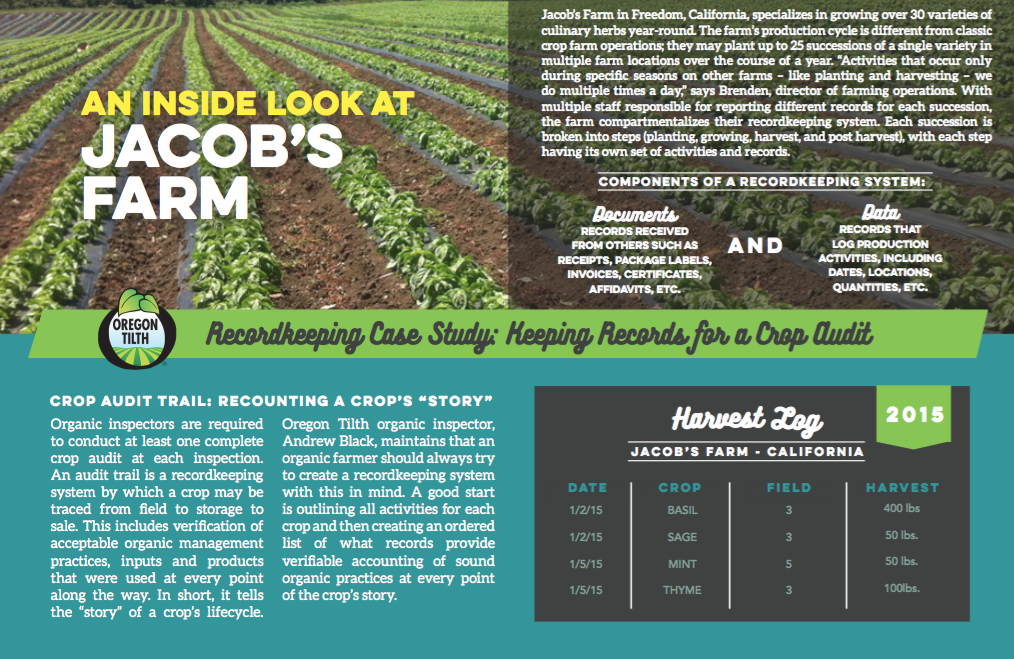Lessons Learned Series: Organic Recordkeeping for a Crop Audit
The records of a certified organic farm’s operations and activities demonstrate where promise and practice meet for an inspector and certifier. An annual mandatory inspection examines the integrity and accountability an organic operation, from pest management to soil conditions to contamination prevention and more. The ability to openly audit and trace any certified organic product or crop from beginning to end is critical to maintaining consumer confidence and creates a strong foundation to address any issue with quick action.
With support from the U.S. Department of Agriculture’s Agricultural Marketing Service, National Organic Program, Oregon Tilth developed a series of farmer-to-farmer case studies on best practices in recordkeeping. We sincerely appreciate the four farms that shared their practices with us in order to “help guide other organic farmers, even if just a little bit” as they build a strong culture of recordkeeping on their farms.
Recordkeeping case study: Documenting for a crop audit
An inside look at Jacob’s Farm

Jacob’s Farm in Freedom, California, specializes in growing over 30 varieties of culinary herbs year-round. The farm’s production cycle is different from classic crop farm operations; they may plant up to 25 successions of a single variety in multiple farm locations over the course of a year. “Activities that occur only during specific seasons on other farms – like planting and harvesting – we do multiple times a day,” says Brenden, director of farming operations. With multiple staff responsible for reporting different records for each succession, the farm compartmentalizes their recordkeeping system. Each succession is broken into steps (planting, growing, harvest, and post harvest), with each step having its own set of activities and records.
Crop audit trail: Recounting a crop’s “story”
Organic inspectors are required to conduct at least one complete crop audit at each inspection. An audit trail is a recordkeeping system by which a crop may be traced from field to storage for sale. This includes verification of acceptable organic management practices, inputs and products that were used at every point along the way. In short, it tells the “story” of a crop’s lifecycle.
Oregon Tilth organic inspector, Andrew Black, maintains that an organic farmer should always try to create a recordkeeping system with this in mind. A good start is outlining all activities for each crop and then creating an ordered list of what records provide a verifiable accounting of sound organic practices at every point of the crop’s story.

Jacob’s Farm best practices for recordkeeping systems
1. Develop your procedures
Jacob’s Farm uses a free online program where records can be uploaded, viewed and updated by any staff member. If using paper records, journals and forms may be strategically placed around the farm to make it convenient for staff to log and access records quickly.
2. Create your system
Standardize your recordkeeping forms for all crops. “Standardized forms with clear instructions on how to record information ensures that regardless of how many crops you have, or the number of staff that are keeping records, all records will be kept the same way,” says Brenden.
3. Work with your team
Create a job description that gives equal weight to recordkeeping as other farm tasks to help develop a sense of ownership over documentation duties. Conduct trainings and promote a culture that incentivizes good recordkeeping habits.
4. Review your records
Check your recordkeeping system to account for all steps of an audit. When creating recordkeeping templates or forms, double check that all critical information is collected. See the infographic above for more information on what records to keep for a crop audit.

Additional resources
Knowing how to begin to develop your own internal systems and controls can seem overwhelming at first, but there are great (and simple) forms to use as templates for your own operation as you customize for specific needs:

